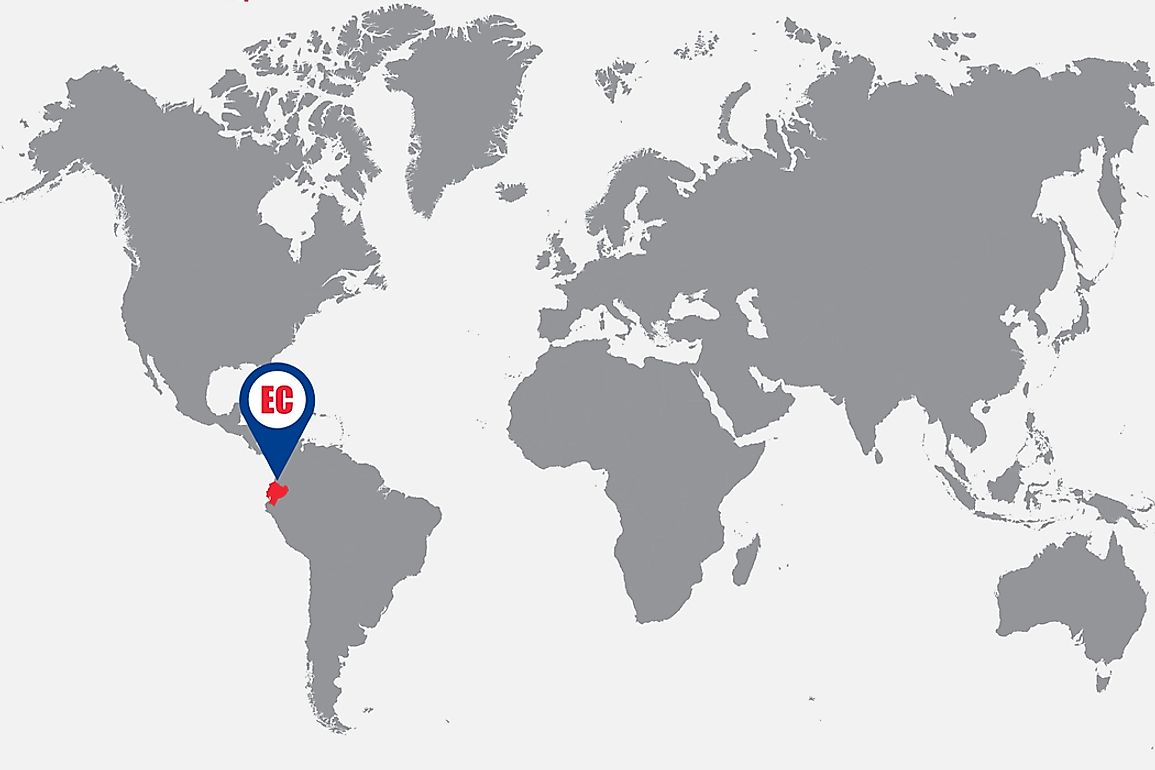What Continent is Ecuador In?

The Republic of Ecuador lies on the northwestern corner of the South American continent. It is the fourth smallest country in the continent and the most mega-diverse country in the world with a wide array of flora and fauna existing in the different climatic zones. Ecuador borders Colombia to the north, the Pacific Ocean to the west, and Peru to the east and south. Ecuador is governed as a democratic republic and has a developing economy supported by the agriculture, tourism, and manufacturing industries.
History
Since attaining its independence from the Spanish in 1830, Ecuador has gone through a tumultuous past including 100 changes in government and 20 changes of the constitution with the latest passed in 2008. Contributing to the nation’s historic turmoil were rivalries between internal conservatives comprising of the church-backed Quitos and liberalists comprising of secular Guayaquil. Although the volatile rivalry between the two factions ended, there are still tensions between them up to date. Ecuador regained its democracy in 1979 after a democratic constitution was passed and a new government took over. A peace treaty was signed between the country and Peru in 1998 to end the borderline conflict that had lasted for five decades.
Geography
Ecuador covers 109,484 square miles stretching up to the Galapagos Island. It is divided into four geographic regions namely La Costa (the coast), La Sierra (highlands) consisting of the Andean and Interandean highlands, La Amazonia covering the Amazon jungle, and La Region Insular comprising of the Galapagos Island. Due to its location along the equator, Ecuador experiences warm humid and tropical weather all year round. Ecuador is the most bio-diverse country in the world hosting thousands of species of butterflies, birds, animals, and plants. The Galapagos Island is also widely bio-diverse and home to the largest population of marine Iguanas and the last population of the Galapagos tortoise. It is a UNESCO World Heritage Site and home to Darwin’s theory of Evolution.
Economy
Ecuador is a middle-income country with a developing economy that is highly dependent on agriculture and petroleum. It has economies of scale in agriculture favored by the tropical and sub-tropical climate. Ecuador is renowned as the world’s largest producer and exporter of bananas and the seven largest producers of cocoa. Through active participation in the Andean Community of Nations, Ecuador has managed to enter into bilateral treaties with other international organizations beyond Latin America such as the World Trade Organization and the World Bank. In April 2007, Ecuador paid off its public debt with the International Monetary Fund thus ending the union’s era of interventionism in the country.
Tourism
Tourism has grown to be the third largest industry in the economy. Having been named as a UNESCO World Heritage Site, Ecuador has an array of tourist attraction sites to offer. The Amazon jungle and the Galapagos Island make it a mega-diverse country home to distinguished flora and fauna as well as antique Gothic buildings dating back to 15th century. The warm tropical climate attracts tourists to the La Costa region. Saturdays are synonymous with feria market day where locals and tourists buy art pieces that reflect on the county’s past and modern culture.











